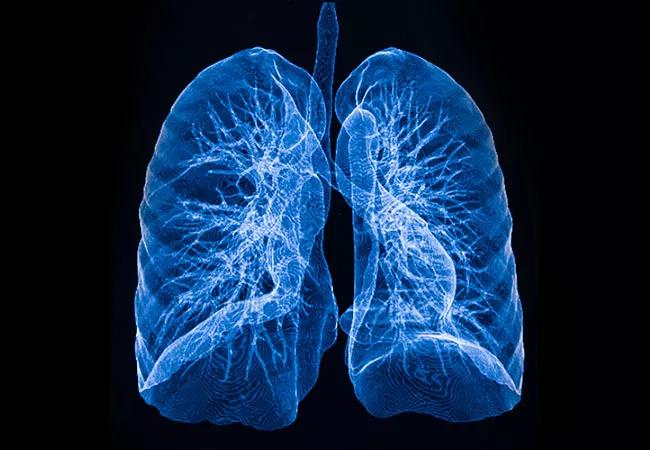Complexities at every level of the transplant process reinforce the importance of following recommendations.

While it remains unclear if lung transplant patients are at higher risk for COVID-19, several published reports indicate measures can be taken to reduce risk for this patient population. These measures are discussed in a recent review from Wayne M. Tsuang, MD, MHS, and Marie M. Budev, DO, MPH, included in Cleveland Clinic Journal of Medicine’s collection of COVID-19 Curbside Consults.
Advertisement
Cleveland Clinic is a non-profit academic medical center. Advertising on our site helps support our mission. We do not endorse non-Cleveland Clinic products or services. Policy
For patients who have had a lung transplant and are experiencing symptoms of a respiratory infection, the treatment path is dependent on the patient’s symptoms. The recommendation is to have a low threshold for COVID-19 testing in a patient with mild symptoms. Patients should also be simultaneously tested for other viruses, including influenza and respiratory syncytial virus. The absence of fever is atypical in a patient presenting with COVID-19, and this should be considered when evaluating transplant patients. However, local policies and the availability of resources are the ultimate determining factors when testing for COVID-19 in an asymptomatic transplant patient.
The patient’s transplant center should also be notified as soon as possible for additional guidance on clinical management. Patients with mild symptoms and no shortness of breath or hypoxia should be quarantined at home for two weeks and monitored frequently for symptoms through phone or telehealth visits. When patients present with moderate symptoms, including hypoxia, they should be directed to the nearest emergency room and admitted for supportive care.
If a lung transplant patient is admitted to the hospital with hypoxia from COVID-19, it is important to understand that the patient’s health may rapidly deteriorate. While individual center practice resources will ultimately determine intubation timing, early endotracheal intubation should generally be considered. Noninvasive positive pressure ventilation should be limited to avoid aerosolization of the virus. Concomitant antimicrobial or antifungal therapy may also be necessary. For patients with moderate or severe disease, current guidelines recommend holding mycophenolate motefil or azathioprine. These patients should also be closely monitored for graft rejection. Extracorporeal membrane oxygenation may be needed in addition to invasive ventilation for the severely ill who may have severe hypoxemia.
Advertisement
In addition to their summary of recommendations, Drs. Tsuang and Budev also discuss the medications lung transplant patients usually take and how to properly manage immunosuppressed patients. This information can be found in the full text, which is available here.
Patients who are candidates for lung transplant and do not have COVID-19 may still be referred to a transplant center. However, there are several factors that affect patients who are wait-listed for a lung transplant. Each individual transplant center considers how ill a wait-listed patient is, how soon a transplant is needed, and whether it is in a patient’s best interest to wait until the pandemic has passed. Post-transplant risks, such as infectious exposure risks from immunosuppressing the patient in the hospital and infectious exposure risks to surgeons who might have to travel to procure donor organs, must also be taken into account during the decision-making process. Drs. Tsuang and Budev note that to their knowledge, there has been no transmission of COVID-19 from an organ donor to a lung transplant recipient, and that is mostly due to the precautions taken by transplant centers and procurement teams.
For more information on caring for lung transplant patients, Drs. Tsuang and Budev’s full article from Cleveland Clinic Journal of Medicine’s COVID-19 Curbside Consults, with references, can be found here.
Advertisement
Advertisement

Patients report improved sense of smell and taste

Clinicians who are accustomed to uncertainty can do well by patients

Unique skin changes can occur after infection or vaccine

Cleveland Clinic analysis suggests that obtaining care for the virus might reveal a previously undiagnosed condition

As the pandemic evolves, rheumatologists must continue to be mindful of most vulnerable patients

Early results suggest positive outcomes from COVID-19 PrEP treatment

Could the virus have caused the condition or triggered previously undiagnosed disease?

Five categories of cutaneous abnormalities are associated with COVID-19